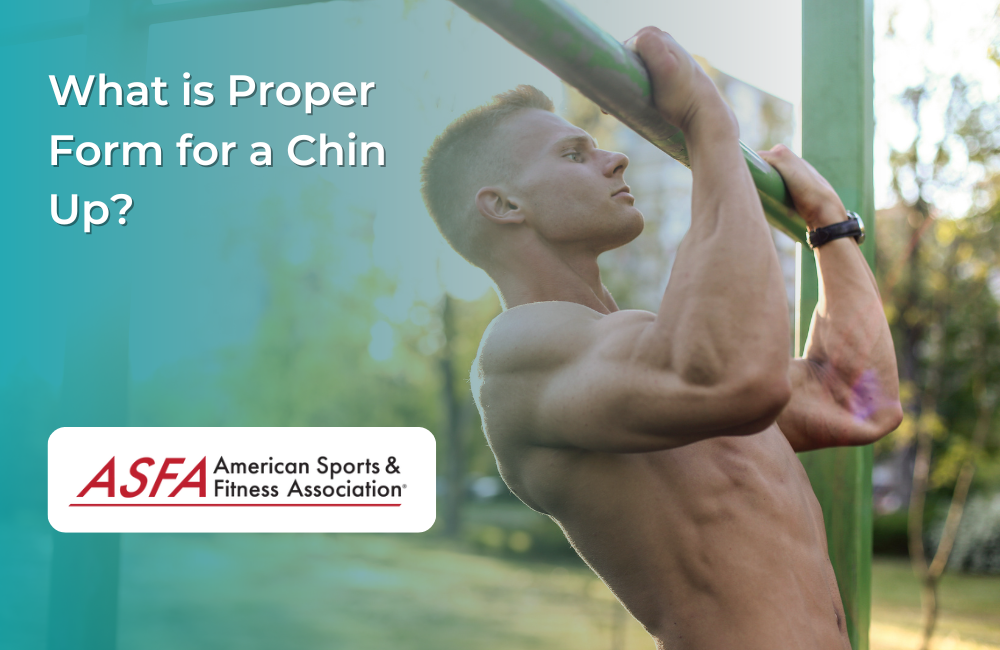A chin-up is a bodyweight exercise that strengthens the back, arms, and core. It involves gripping a bar with an underhand grip, pulling the body upward until the chin clears the bar. This movement primarily targets the biceps more than a pull-up due to the palm positioning. Using proper form ensures optimal muscle engagement while minimizing the risk of injury.
What is Proper Form for a Chin-Up: Muscles Worked
Chin-ups primarily activate the latissimus dorsi, responsible for pulling the body upward, while also engaging the arm muscles and shoulder muscles to ensure proper form and technique. The biceps play a significant role in elbow flexion, making this exercise more arm-dominant than a pull-up. The rhomboids and trapezius assist in stabilizing the upper back. The forearm muscles contribute to grip strength, and the core remains engaged to maintain body control and prevent excessive swinging. Additionally, the upper back muscles, including the trapezius and rhomboids, play a crucial role in stabilizing the shoulder muscles during the movement.
Understanding the Chin-Up Exercise
The chin-up exercise is a powerful compound movement that targets multiple muscle groups, including the upper back, arms, and shoulders. As a bodyweight exercise, it requires minimal equipment—just a sturdy, immobile bar positioned above your head but within arm’s reach. During a chin-up, you lift your entire body weight off the ground, engaging key muscles such as the latissimus dorsi, biceps, and trapezius. This makes chin-ups an accessible and effective way to build upper body strength without needing a gym full of equipment.
Benefits of Chin-Ups
Chin-ups are a fantastic exercise for building and strengthening muscles, particularly in the upper body. They not only enhance overall fitness and athleticism but also offer modifications to suit different fitness levels. Regularly performing chin-ups can improve posture, reduce the risk of injury, and add variety to your workout routine. Additionally, mastering chin-ups can boost your confidence and self-esteem, as you witness your strength and endurance grow over time. Whether you’re a beginner or an advanced athlete, incorporating chin-ups into your regimen can yield significant benefits.
Proper Form for a Chin-Up
Using a chin up bar, gripping the bar with palms facing inward and hands at shoulder width provides the best balance of muscle activation. Maintaining correct form by keeping the shoulders slightly retracted prevents excessive strain while engaging the back muscles. Initiating the pull by driving the elbows down rather than relying solely on the arms helps maximize lat activation. The chest should stay lifted as the body moves upward, bringing the chin above the bar in a controlled motion. Lowering the body back to a full hang with extended arms ensures proper range of motion and prevents strain on the joints. Mastering proper chin up form is essential for enhancing overall strength and improving posture.
Common Mistakes to Avoid
Using momentum to swing up reduces muscle engagement and increases injury risk. Cutting the range of motion short by not fully extending at the bottom limits strength development. Shrugging the shoulders instead of keeping them down places unnecessary tension on the neck and traps. Over-gripping the bar too tightly can lead to forearm fatigue before the primary muscles are fully worked. Performing a proper chin up is crucial to avoid these common mistakes and ensure effective strength building and posture improvement.
Variations and Progressions
Assisted chin-ups using resistance bands or an assisted pull-up machine help build strength. Negative chin-ups, focusing on a slow and controlled descent, improve eccentric control. Weighted chin-ups add resistance, promoting further muscle growth and endurance.
Programming and Training
Incorporating chin-ups into your training program starts with assessing your current fitness level and setting realistic goals. Beginners can start with assisted chin-ups and gradually work up to a full chin-up. It’s recommended to include two days of resistance training per week, with at least one day of rest in between to allow for muscle recovery. When performing chin-ups, focus on maintaining proper form and technique. Aim to complete 3-5 sets of 8-12 repetitions, ensuring each rep is performed with control and precision. Consistency and attention to form will help you progress and achieve your chin-up goals.
Alternatives and Substitutions
If performing a full chin-up seems daunting, there are several alternatives and substitutions to help you build strength. Half chin-ups involve lifting your body to the midpoint of the movement, making it easier to manage. Assisted chin-ups, using a pull-up assist machine or a thick band, reduce the amount of weight you need to lift. You can also use a shorter bar or a resistance band to make the exercise more accessible. Additionally, exercises like pull-ups, lat pulldowns, or rows can serve as effective substitutes, targeting the same muscle groups and helping you build the necessary strength to eventually perform full chin-ups.
Conclusion
Chin-ups are an effective way to build upper-body strength when performed with proper form. Engaging the core, maintaining a stable shoulder position, and executing the movement with control enhances muscle activation while preventing injuries. Consistency and gradual progression allow for strength development over time.
FAQs
How often should I do chin-ups?
Chin-ups can be performed multiple times per week, allowing adequate recovery between sessions for muscle growth.
Are chin-ups better than pull-ups?
Chin-ups emphasize the biceps more, while pull-ups place greater focus on the back. Both exercises contribute to overall upper-body strength.
Why can't I do a chin-up?
Building strength with assisted variations, negative repetitions, and alternative pulling exercises can help improve chin-up performance.
Should I use a wide or narrow grip?
A shoulder-width grip provides balanced muscle engagement, while a narrower grip increases biceps activation.
Can chin-ups help improve posture?
Chin-ups strengthen the upper back, helping counteract poor posture caused by prolonged sitting or forward-rounded shoulders.





